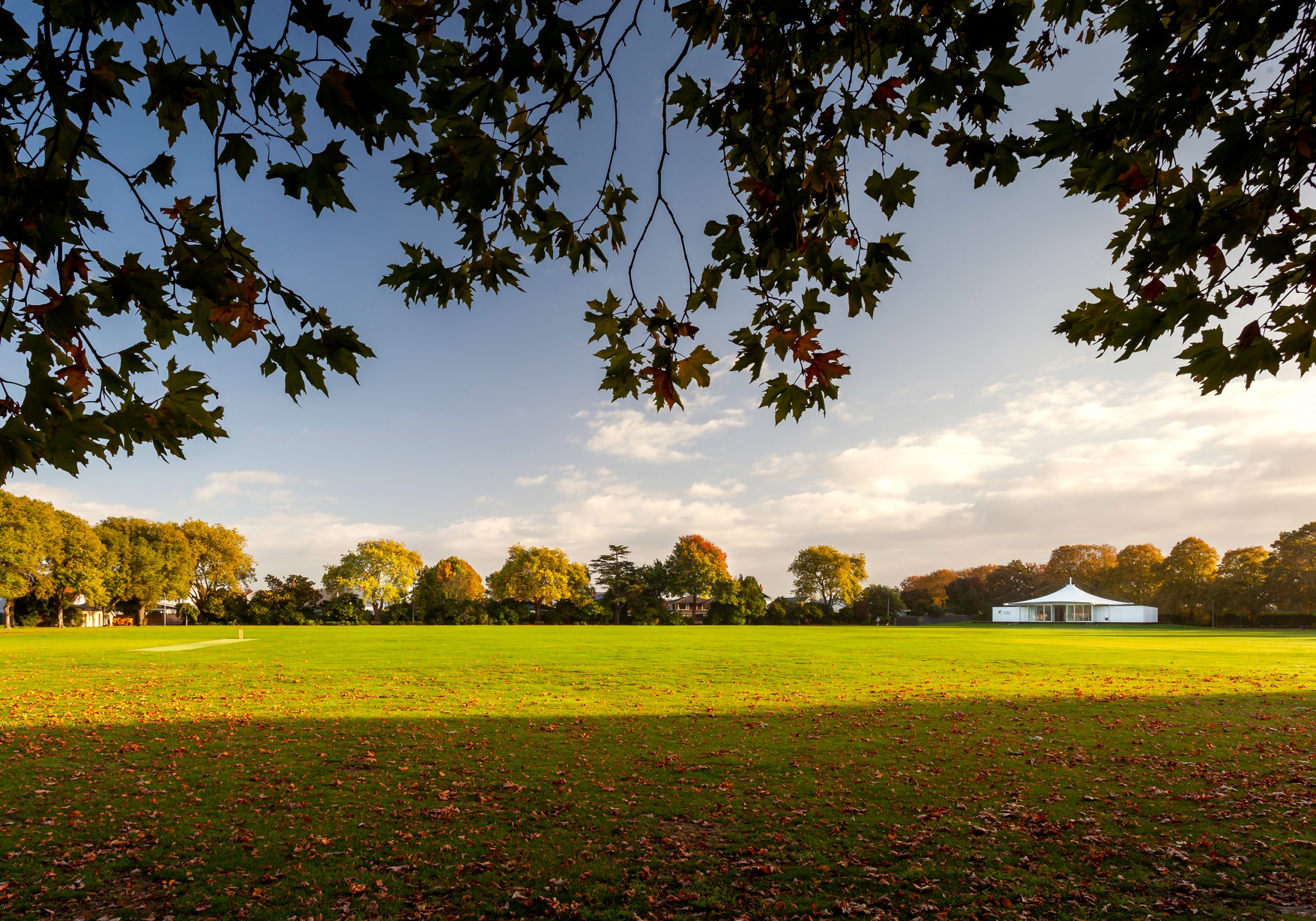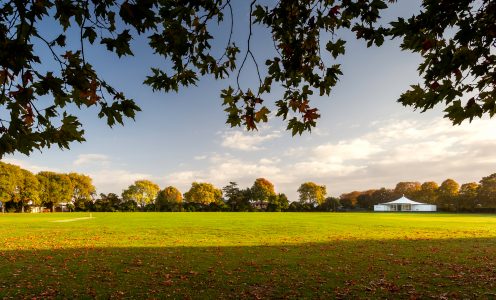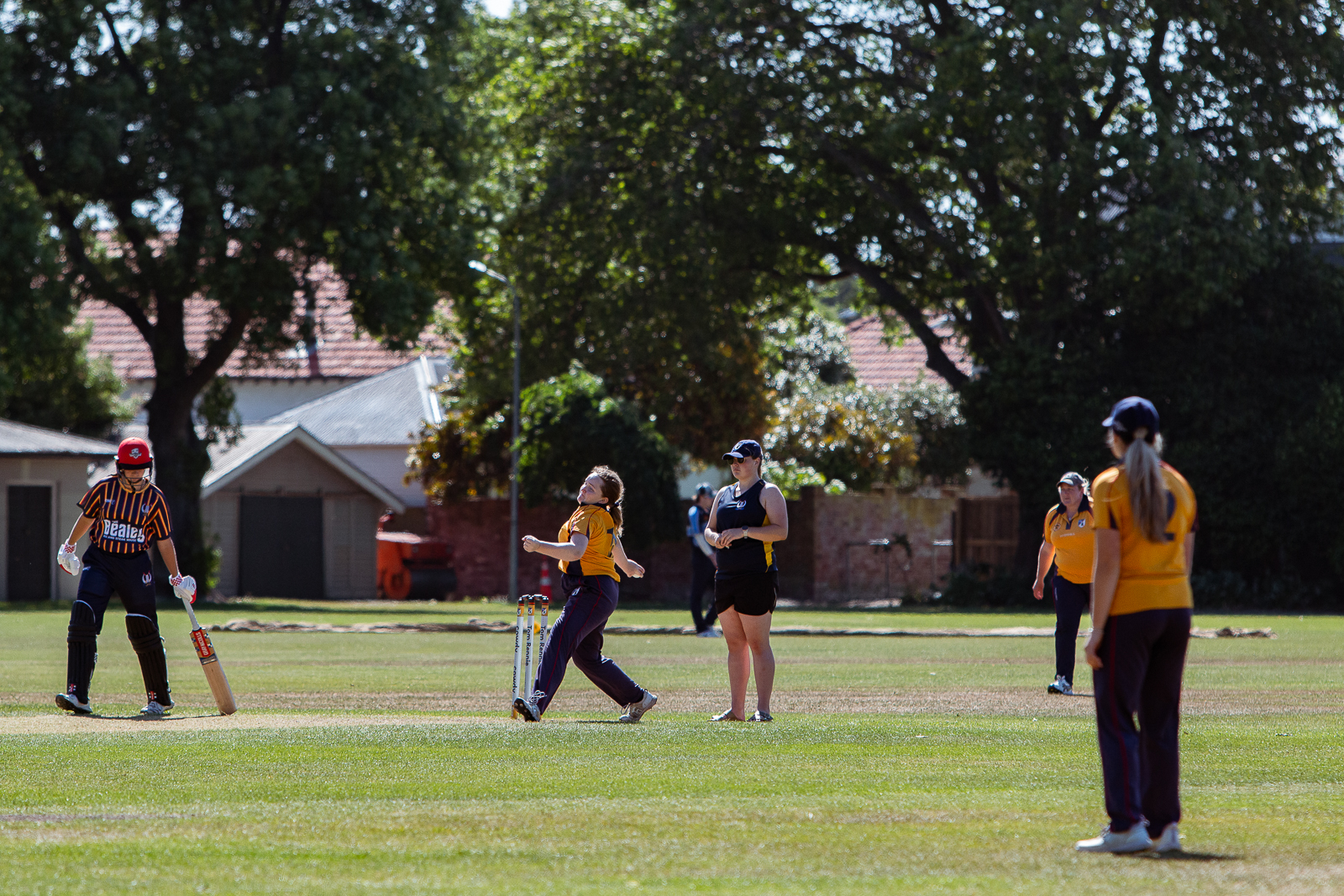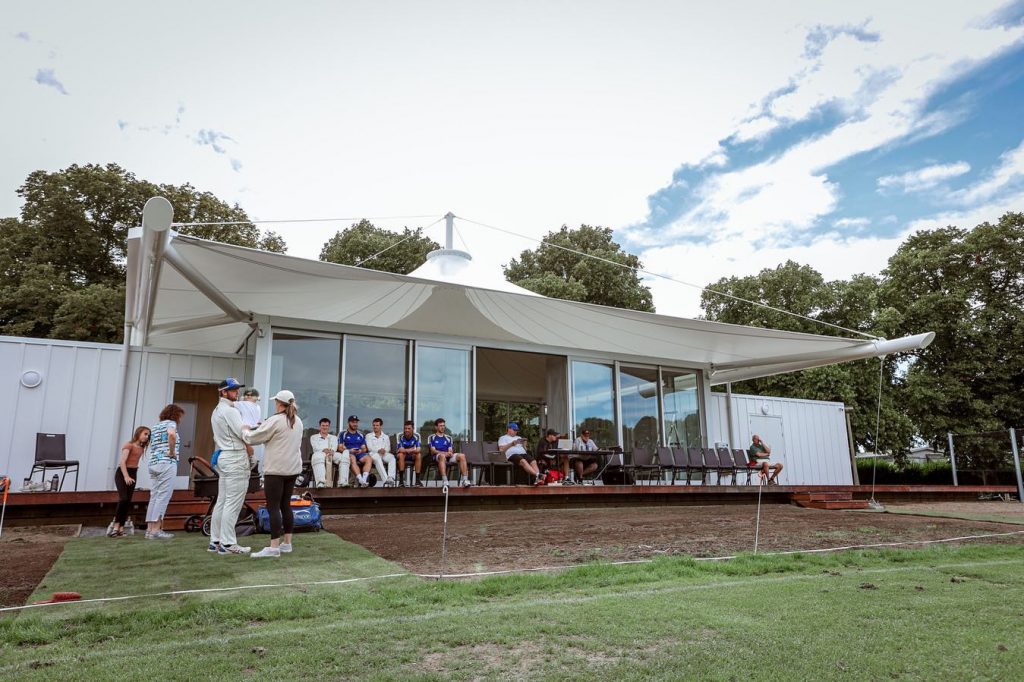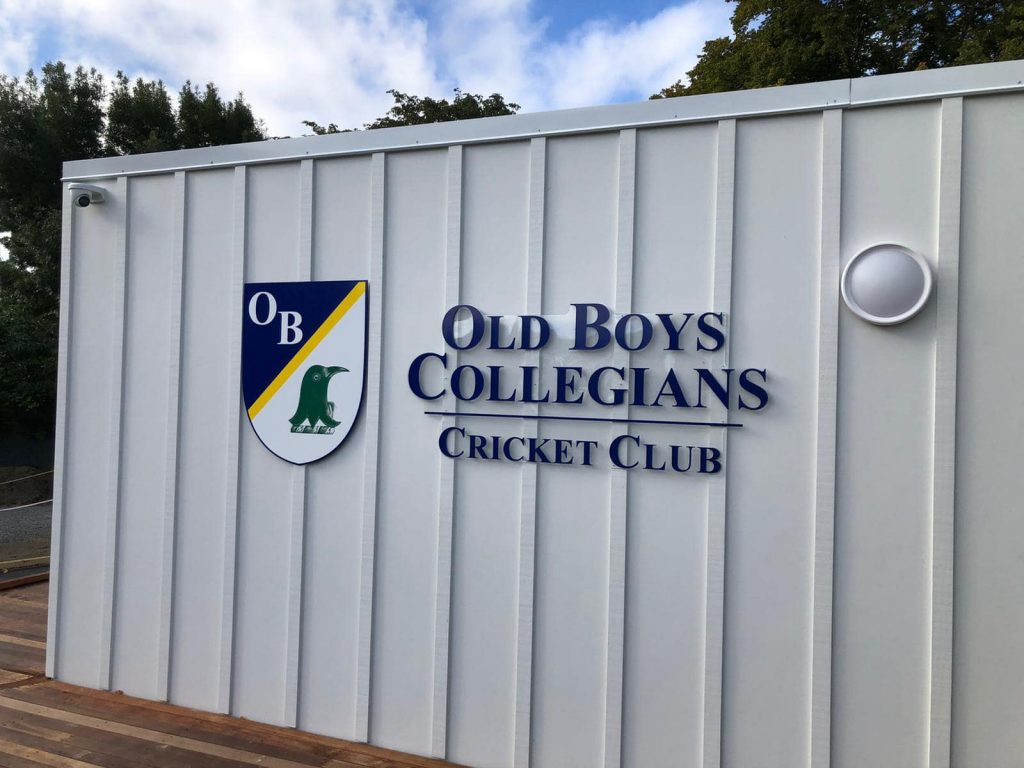
Elmwood Park is a local heritage park in the heart of Merivale. Elmwood Park has historical and social significance due to its association with the Rhodes family, its transformation from a private estate to a suburban park, and for its use by various sporting codes and the local community for almost 100 years. OBC enjoys a very special relationship with Elmwood Park – with cricket first being played at the Park over 90 years ago, and Elmwood Park being home to Old Collegians Cricket Club’s Pavilion/Clubhouse (one of OBC’s foundation Clubs) since the Christchurch City Council first granted them a lease in 1958. Unfortunately, this building was severely damaged in the devastating earthquakes, with part of the building being demolished and replaced with temporary port-a-coms.
The Club is delighted to announce that after years of hard work we have managed to provide our members and the community a new Pavilion at Elmwood Park which will a 50+ year asset and the Club’s new home.
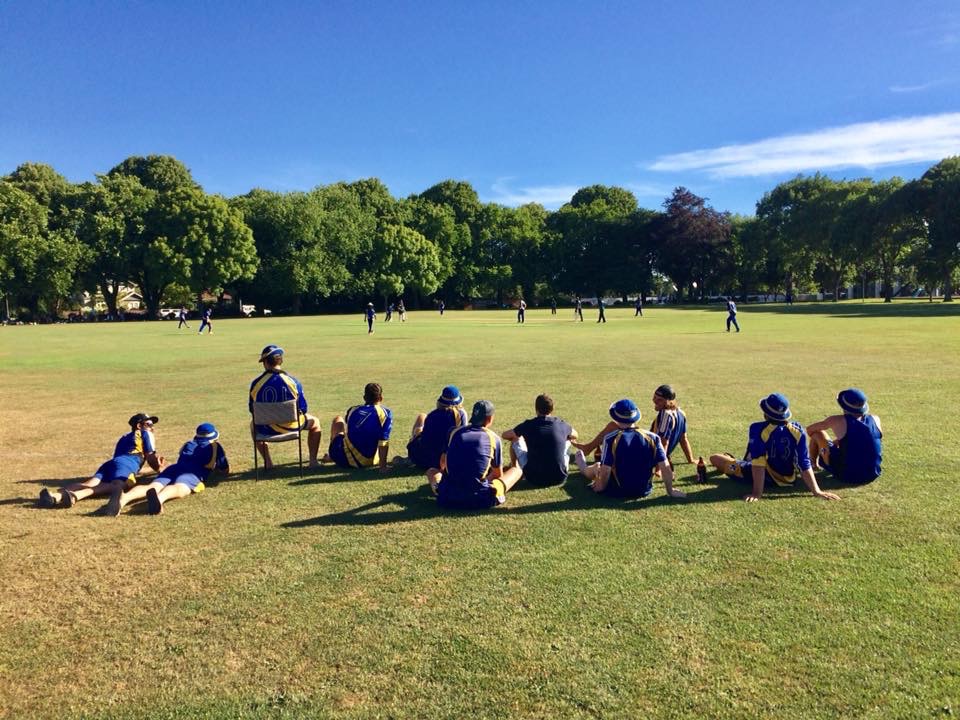
Elmwood Park’s Historical Significance:
The grounds of Elmwood Park were originally part of the Rhodes estate; the residence known as Elmwood was on the site now occupied by the Heaton Normal Intermediate School and the park occupied the former estate’s extensive garden and orchard.
Before moving to Purau in the 1860s, Robert Rhodes had built a house on 50 acres of land, naming the property Elmwood after the English Elm trees that lined the Papanui Road boundary. Rhodes planted most of the trees in the grounds in 1867 including many imported species which were not in common cultivation in Canterbury at that time (Barnett, 1946). In 1882 the dwelling burned to the ground; however Elmwood’s trees, shrubs and orchard were uninjured (The Press, 23 November 1982, p 2). Two years later a replacement dwelling was built within the existing established landscape. Robert Rhodes died in 1884 and the property was left to Robert’s son Heaton Rhodes, a well-known lawyer, runholder and politician who completed the redevelopment of the estate although he lived on his country estate at Tai Tapu.
Heaton Rhodes, began to subdivide the Elmwood estate in the early years of the 1910s and in 1911, a group led by the Christchurch Mayor Thomas Taylor, determined to acquire a portion of the estate for use as a suburban park for the residents of St Albans, Papanui and Fendalton as well as the children attending Elmwood School. In 1919, a block of 6.07 hectares of the estate’s ornamental grounds was acquired as part of a joint purchase by Christchurch City Council, the Government and Waimairi County Council. Christchurch City Council raised a loan of £1000, the Government of the day agreed to contribute £1,000 and Waimairi County Council contributed £1,152 towards the cost of laying out the park.
As part of the development of the park Heaton Street was formed. Allister Avenue was also formed to allow public access to the park from Leinster Road. The land for this was donated by local resident Charles Wood (95 Leinster Road).
James Young, Curator of the Christchurch Botanic Gardens and Superintendant of Reserves was responsible for the overall park layout and his early plant selections for the park included Plane, Horse Chestnut and White Beam. In addition a number of large Lime trees were transplanted from St Albans Park. Paths and sports fields for rugby and cricket were formed between 1922 and 1923, three asphalt tennis courts were formed in 1924 and a tennis pavilion was constructed on the park’s eastern side in 1926. A children’s playground was established on the western side of the park in 1925 and in c.1927 a bowling green was laid out near the tennis courts in a location originally intended for a lake. A croquet pavilion, associated with established croquet lawns, was completed in 1929. An iron post and chain fence previously used on Victoria Square was erected on the park’s Heaton Street frontage in 1924 and ornamental iron gates from Canterbury Hall were erected at the main park entrance on Heaton Street at its intersection with Allister Avenue in c.1925. Halswell stone pillars and a low stone wall were constructed as part of this main entrance.
In 1933, as part of the City Council’s scheme to encourage children to plant and care for trees in parks near their schools, pupils from Elmwood School planted several dozen trees in the park. Species included oak, elm, rowan and plane as well as roses. One year later a commemorative tree was planted in the park by pupils to mark the Royal Jubilee. Other plantings by the Reserves Department prior to 1950 included copper beech, red oak and golden ash.
In the late 1930s Heaton Rhodes further subdivided his estate, and gifted a long narrow strip of land on the eastern boundary of the park to the city to protect the stand of Elms that it contained. This block was surveyed in 1938 and formally added to the park in 1942. This area today contains the driveway and parking. A further block to the east of this area was added to the park in 1945 to allow the expansion of the bowling club.
Today the 6.47-hectare block consists of sports fields and associated sports buildings, a children’s playground, a tree-lined perimeter path, gates and a low chain and post fence on the Heaton Street boundary. For nearly 100 years Elmwood Park has provided a meeting place and recreational sports grounds for the local residents, school pupils and people of neighbouring suburbs.
